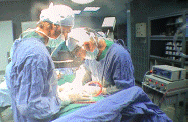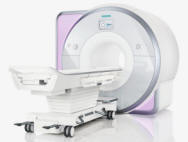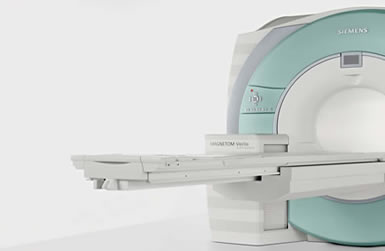|
INDICATIONS AND PATIENT SELECTION FOR NEUROSTIMULATION |
|
 |
Many patients with chronic
pain will respond to a combination of physical therapy,
oral medication and other conservative therapies. Some
will need surgical intervention to address the
mechanical condition causing the pain, while others may
require advanced interventions. Neurostimulation is an
effective alternative to destructive procedures or more
costly spinal surgeries in selected patients. |
 |
General selection criteria for
neurostimulation
For neurostimulation to be considered as a treatment
option, patients should meet the following general
selection criteria:
● There is an objective basis for the patient’s pain
complaint
● The patient is psychologically competent and has
no psychological contraindications
● Further corrective surgeries are likely to produce
complications or poor outcomes
● More-conservative therapies have failed to relieve
pain or have caused intolerable adverse events
● No contraindications to surgery exist (e.g.
sepsis, coagulopathy)
● No untreated chemical dependency exists
● Neurostimulation and IDD are not contraindicated
Neurostimulation is considered as the treatment of
choice for patients with chronic back and leg pain
frequently associated with FBSS whose pain manifests
despite anatomically successful surgery, and for the
treatment of patients with CRPS who are
unsatisfactorily controlled on existing therapies.
Neurostimulation has also proved effective in
difficult-to-treat populations where other therapies
have failed. |
 |
Patient selection for
neurostimulation
Before a patient becomes a candidate for
neurostimulation, the patient should undergo a
thorough evaluation, which should include both
physical
and psychological elements. In addition, all
patients should undergo a trial procedure. |
 |
Physical evaluation
A comprehensive history and physical
examination of the patient should be
completed to ensure that there is an
objective basis for the pain. A complete
pain history includes a general medical
history with emphasis on the chronology and
symptomatology of the pain. These data
should include information about the onset,
quality, intensity, distribution, duration,
course and affective components of the pain,
and details about exacerbating and relieving
factors. The physical examination should
also include an appropriate neurological and
musculoskeletal evaluation. The effects of
pain, as well as the causes of pain, should
be evaluated and recorded. In addition, the
physician should determine the pain type,
pain pattern, and sources of pain.
Determination of such pain characteristics
allows the physician to select the
appropriate therapy. |
 |
Psychological
evaluation
Most physicians agree that before
considering a neuromodulation procedure,
the patient should be assessed by a
psychiatrist or a psychologist to rule
out any psychological issues that may
affect the therapeutic outcome. This
psychological evaluation should take
place in the early phase of the patient
selection procedure.
A carefully performed psychological
evaluation will have several benefits
including, identifying those patients
most likely to benefit from
neuromodulation procedures, better
preparing the patient for the
neuromodulation procedure, and setting
realistic expectations. It can also aid
in preventing unsuitable candidates from
undergoing an invasive and costly
procedure and redirecting rejected
candidates to more appropriate treatment
programs. |
 |
Neurostimulation trial procedure
Conducting a test stimulation before
‘permanent implantation’ allows
patients and the pain management
team to test neurostimulation for
both efficacy and paraesthesia
perception, which sometimes cannot
be tolerated despite good pain
relief. There is no consensus on
either the technical approach or the
length of the SCS trial. In
addition, whether the trial should
be carried out in hospitalized
patients or on an outpatient basis
is a matter of personal opinion,
since there are no data to support
any specific recommendations.
The criteria for a successful trial
include at least a 50% reduction in
pain intensity and in those centers
able to measure it, a decrease in
analgesic intake and a significant
functional improvement. Patients
that show substantial improvements
in these parameters can be
considered for a permanent
implantation. |
 |
Indications for neurostimulation
There is a large pool of
evidence supporting the
beneficial effects of
neurostimulation. In general,
neurostimulation is most
effective for neuropathic pain,
typically when the pain is of
non-malignant origin (i.e. pain
from a source other than
cancer). Neurostimulation is CE
marked for:
● Chronic, intractable pain of
the trunk or limbs
● Neuropathic pain
● Stable pain patterns
Neurostimulation may also be
used when other therapy methods
are contraindicated. For
example, neurostimulation may be
indicated for patients for whom
spinal surgery is
contraindicated and for patients
who may not fully profit from
reoperation. |
|
Table 1: Common indications
for neurostimulation |
|
Disorder |
Causes and Characteristics |
|
Chronic back or leg pain
associated with Failed Back
Surgery Syndrome (FBSS),
especially when pain is of a
dominant neuropathic nature* |
● A
broad term used to describe
persistent, disabling pain
in the leg and/or lower back
that follows one or more
corrective back surgeries
● Commonly caused by injury
to spinal structures,
especially those of the
lumbar spine
● Many patients develop
their original pain from a
ruptured disc, however the
ensuing chronic pain is
often a result of subsequent
surgical procedures that
cause scar tissue build up
and/or neural damage
● FBSS of primarily
neuropathic origin is the
best indication for
neurostimulation |
|
Complex regional pain
syndrome (CRPS) Type I (Also
called reflex sympathetic
dystrophy) |
●
CRPS refers to various
painful conditions that can
occur secondary to an injury
● CRPS Type I develops in
response to a noxious event
(non-nerve injury) e.g.
muscle sprain, bone fracture
● Potential causes include
repetitive trauma, stroke,
myocardial infarction (heart
attack) and excessive strain
● The pain symptoms are
complex, diffuse,
disproportionate to the
original injury and worsen
in response to limb pressure |
|
Complex regional pain
syndrome (CRPS) Type II
(Also called causalgia) |
●
CRPS II develops in response
to a nerve injury, usually
to large nerves such as the
median or sciatic nerve
● The pain is similar to
that in CRPS Type I, however
patients with Type II may
also experience a formerly
painless stimulus as
painful, or may be
hypersensitive to a
stimulus, often in a hand or
foot |
|
Refractory angina |
●
Angina that is no longer
treatable by surgical or
medical intervention is
known as refractory angina
● Angina is a recurring pain
or discomfort in the centre
of the chest that occurs
when the heart’s need for
oxygen increases beyond the
oxygen available from the
blood nourishing the heart
● It is a common symptom of
coronary heart disease,
which occurs when vessels
that carry blood to the
heart become narrowed and
blocked due to
atherosclerosis
● Physical exertion is the
most common trigger for
angina. Other triggers can
be emotional stress, extreme
cold or heat, heavy meals,
alcohol and cigarette
smoking |
|
Peripheral vascular disease
|
●
Caused by atherosclerotic
plaque that causes the
internal lining of the
arteries to thicken; blood
vessels become increasingly
restricted and blood flow
diminishes
● The most commonly affected
peripheral areas are the
arteries in the legs, arms,
kidneys and neck
● Symptoms include dull
cramping pain in the hips,
thighs or calf, numbness or
tingling in the legs, feet
and toes, and changes in
skin temperature |
|
Postherpetic neuralgia (PHN)
|
● A
serious, painful
complication of herpes
zoster, an infectious
disease
● Pain is characterized by
constant burning, aching
sensations and episodes of
‘shooting-like’ electrical
pain |
|
Diabetic neuropathy |
● A
nerve disorder caused by
diabetes mellitus
● It is characterized by a
loss or reduction of
sensation in the feet, and
in some cases the hands, and
by pain and weakness in the
feet. |
|
Phantom limb pain |
● A
painful sensation that an
amputated limb is still
present
● The syndrome is often
associated with a painful
sensation, such as burning,
pricking, tickling or
tingling |
|
Spinal stenosis |
● A
narrowing of the spaces in
the spine resulting in
pressure on the spinal cord
and/or nerve roots
● Pressure on the lower part
of the spinal cord or on
nerve roots branching out
from that area may give rise
to
pain or numbness in the legs
● Pressure on the upper part
of the spinal cord (neck)
produces similar symptoms in
the shoulder |
|
*FBSS pain that is primarily
nociceptive responds to IDD.
However, as most FBSS pain
comprises nociceptive and
neuropathic components, it
can be effectively treated
with either neurostimulation
or IDD. |
|
|
|
|
 What’s Up
What’s Up |
 |
August/14/2007
Inomed ISIS Intraoperative neurophysiological monitoring started
to function in all our related surgeries.
|
|
|
|
 |
Oct /07/2009
The author celebrating 30 years experience in neurosurgery. |
 |
Nov/28/2013
Skyra 3 tesla magnetom with all clinical applications are
running in the neurosuite. |
|
|
